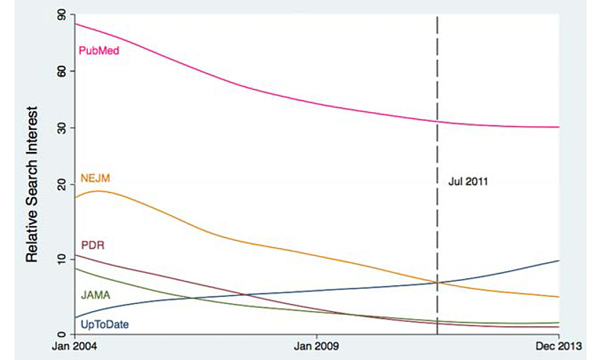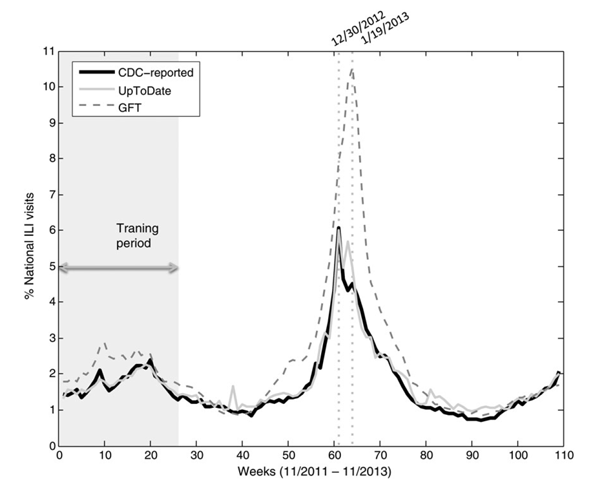Residents’ patient-specific clinical questions: opportunities for evidence-based learning.
Schilling LM, Steiner JF, Lundahl K, Anderson RJ. Residents’ patient-specific clinical questions: opportunities for evidence-based learning. Acad Med. 2005 Jan;80(1):51-6.
A study at the University of Colorado examined how answering patient-specific clinical questions affected residents’ patient care decisions. Internal medicine residents were asked to formulate a clinical question and use evidence-based learning guidelines to answer them. Results from the study show that:
- UpToDate was the most frequently used information source by residents.



